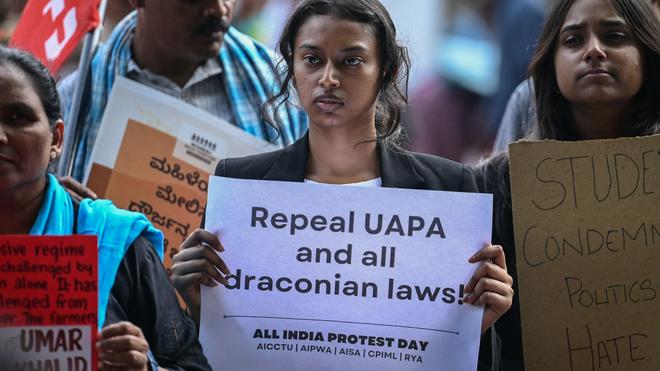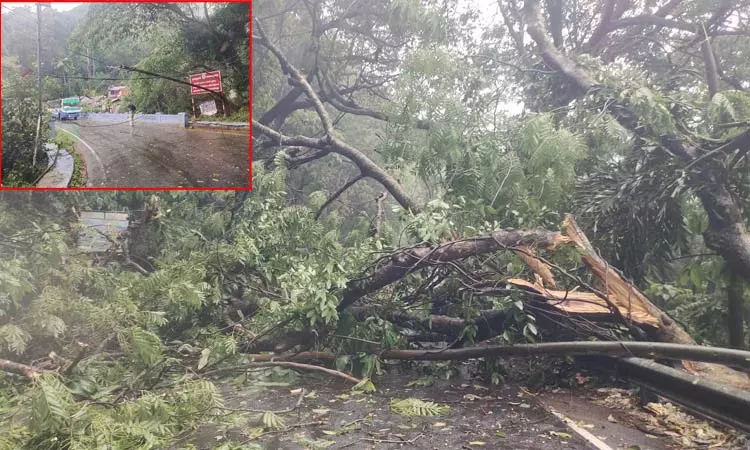Half of UAPA investigations pending for over three years: Data
Three recent developments have put the spotlight back on prolonged detentions, stalled investigations, and inordinate delays on bail matters under the draconian Unlawful Activities (Prevention) Act (UAPA), 1967.
On October 12, former Delhi University Professor G.N. Saibaba died just months after getting acquitted in a UAPA case, following a decade of incarceration. Last week, the bail plea of Jawaharlal Nehru University student, Umar Khalid, who was arrested under the UAPA four years ago, was once again postponed, as the Bench could not assemble with the judges on leave. Last month, the Supreme Court granted bail to a UAPA accused, who was in prison for more than four years, citing the delay in trial.
Data show that half the cases filed under the UAPA were pending at various stages of police investigation for over three years, at the end of 2022. This is the second highest such share across 122 crime heads, such as murder and gambling.
Chart 1 shows the number of cases (horizontal axis) and the share of cases (vertical axis) pending police investigation for over three years under all the 122 crime heads of the Indian Penal Code (now called the Bharatiya Nyaya Sanhita) and the Special and Local Laws, at the end of 2022.
Over 2,020 UAPA cases were pending investigation for over three years, 50% of the total such cases pending at the end of 2022 (4,037). The UAPA is a stark outlier in the share of such cases. Cases registered under the Forgery and Counterfeiting Act, 1981 (57%) and Passports Act, 1967 (43%) had the next highest shares.
Chart 2 shows the share of UAPA cases between 2019 and 2022 whose investigations have been pending for more than three years.
Not only is the share of UAPA cases pending investigation for more than three years high, but it has also increased in the recent past. The share of UAPA cases pending for over three years increased from 40% at the end of 2019 to 50% at the end of 2022.
Chart 3 shows the number of persons arrested under the UAPA, persons charge sheeted, discharged, acquitted, and convicted in the 2017-2022 period.
While it is important to recognise that those arrested during this period may not necessarily be the same people who were convicted or acquitted in the period, the data still provides a useful approximation of the overall trend. The number of those convicted, acquitted, and discharged formed less than 10% of the people arrested in the period, pointing to delayed trials.
While stalled police investigations and delayed trials are par for the course in the Indian justice system, what makes laws such as UAPA draconian is that the people arrested are rarely let out on bail.
Chart 4 shows the number of people arrested under the UAPA between 2018 and 2020, and the number of people who were convicted, acquitted, got bail, and those who did not feature under any of the three categories. The caveat for Chart 3 applies for Chart 4 too.
While 23% of those arrested under the UAPA got bail, 3% were convicted and 7% were acquitted. The rest 67% were languishing in jail. Together, the charts show that in cases filed under the UAPA, the process is the punishment.
Source: National Crime Records Bureau
vignesh.r@thehindu.co.in
nitika.evangeline@thehindu.co.in
Published - October 17, 2024 07:00 am IST

























